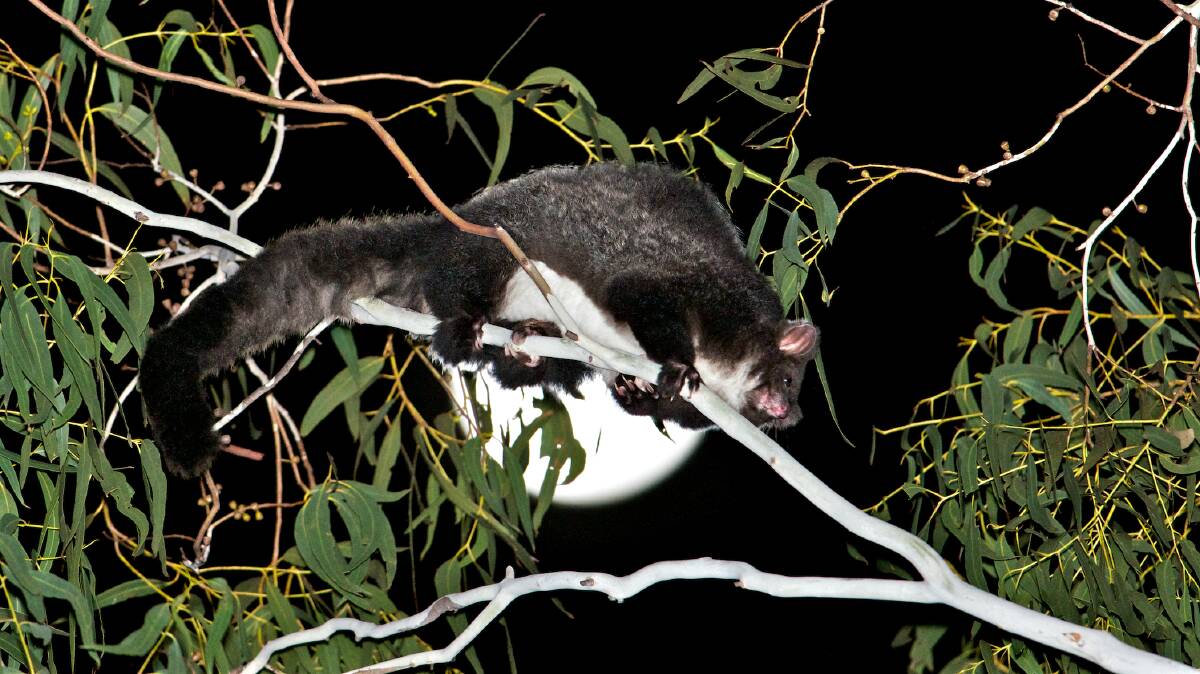
Australia's largest glider and the world's second-largest gliding mammal, the population of the greater glider has continued to decrease since the catastrophic Black Summer bushfires.
A report on the greater glider by World Wide Fund for Nature-Australia (WWF-Australia) shows the 2019/20 bushfires have pushed the species closer to the brink by scorching nearly a third of its likely habitat.
According to the report, in NSW damage to 42 per cent (1.86million hectares) of the burned likely habitat area was severe or extreme with the canopy partly or completely consumed.
David Gallan, president of the Far South Coast Branch National Parks Association (NSW), said greater gliders were once plentiful and the current threat facing the species was alarming.
Greater gliders feed exclusively on eucalyptus leaves and rely on hollows in large eucalypt trees to breed and shelter.
IN OTHER NEWS:
According to Mr Gallan, the trees need to be more than a century old to develop large enough hollows for shelter, without which the gliders cannot survive.
"Greater gliders are known as an indicator species, pointing to the health and diversity of the forest. Species such as powerful owls heavily prey on them," Mr Gallan said.
"Do we know how many survived the '19/20 fires? In patches yes, but overall? There must have been a significant impact.
"To what extent we don't know in detail as there doesn't seem to be much published information."
In a new report, WWF-Australia has identified six landscapes on the east coast of Australia which include areas of unburnt habitat serving as vital refuges for threatened plants, animals, and ecological communities.
It outlines priorities for protection and restoration of for threatened species and ecosystems after the 2019/20 bushfires, and specifically identifies cross-border communities of Gippsland and Eden as a vital area of habitat for the greater glider.
With the threat of land clearing and logging looming large, WWF-Australia has undertaken a new partnership with the aim of protecting species across the six areas.
Stating the importance of saving these intact areas of forest, WWF-Australia and the Environmental Defenders Office announced this month the 'Defending The Unburnt Six' signature partnership.
WWF-Australia is funding EDO solicitors to help the community use existing federal and state laws to protect the six landscapes identified, as well as working to improve those laws.
WWF-Australia said it will advocate for up-listing of threatened species and ecological communities which have an increased risk of extinction after the fires.
According to Mr Gallan, the WWF proposal was based on remote sensing and mapping work and had some caveats, but also had worthy ideas behind it.
"Is the government funding extensive on the ground survey work to determine what's left and priorities for threatened species protection? Not to our knowledge," he said.
Literature relating to the species shows that greater gliders cannot re-settle when displaced by fires and logging.
"That is why, after research in the '60s and '80s, it was ridiculous for VicForests to recently propose greater glider habitat trial logging," Mr Gallan said.
"Very recently, DNA research has identified the greater glider as three separate species which will have future implications for land managers in various states."
Professor David Lindenmayer of Australian National University is Australia's foremost expert on greater gliders and among the most highly cited forest ecologists in the world.
He described the proposed VicForest logging as unethical and went further to say, "I see that as the terrestrial equivalent of so-called 'scientific whaling'."
In his recent submission on the private members bill related to the Regional Forest Agreements and the Environment Protection and Biodiversity Conservation Act, Professor Lindenmayer stated:
"The Regional Forest Agreements were designed to protect Australia's forest biodiversity. They have clearly failed to do this (Lindenmayer et al. 2015) (Lindenmayer 2018). This is highlighted by significant declines in a large number of Australian forest-dependent threatened species.
"For example, populations of leadbeater's possum and the greater glider have declined by 50 per cent and 80 per cent in the past 20 years. The extent of logged forest in the landscape has been demonstrated to be a key driver of decline in both species. (Lindenmayer et al. 2020a)".
Mr Gallan said new information is just coming to light now about the chemistry of greater glider and koala leaf preferences in feed trees, which has huge implications for land management.
"We've known for some time forests are negatively transformed, promoting the dominance of silvertop ash, after logging and fire," he said
"The Border Fire and other mega fires were so widespread and intense that it was difficult for animals to take refuge in those landscapes, especially in ones affected by logging which changed the forest mix and age.
"Intact, and more moist, old growth forest usually mitigates the spread of fire.
"The current logging needs to be stopped or greatly reduced in burnt areas as well critically important unburnt areas. Industrial scale logging cannot go on with a business as usual attitude," Mr Gallan said.


